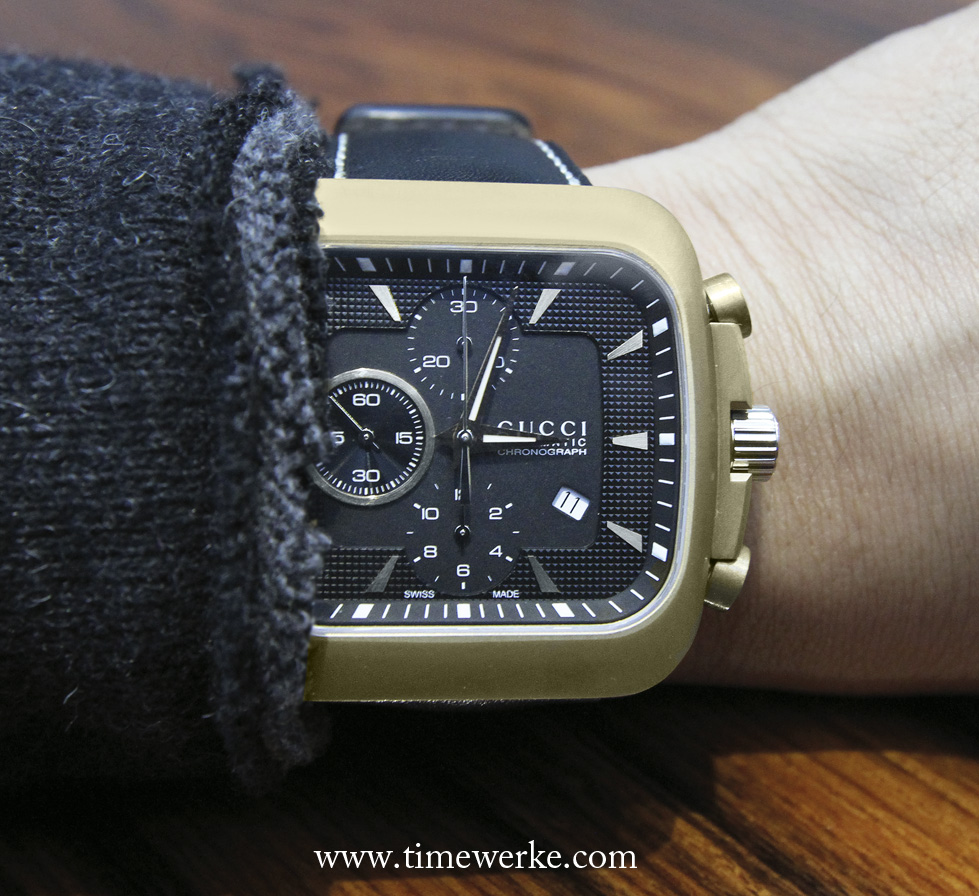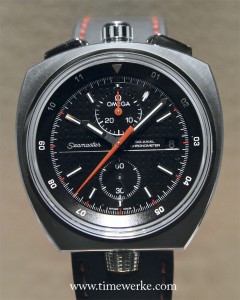Among the brands that made our eyes light up this year at the annual BaselWorld watch fair was Gucci, notably with its gent’s watches, in particular, the Dive watch housing a Girard-Perregaux movement (not shown here) and the Coupé Bronze Automatic Chronograph (above).
As the name implies, the case of the Gucci Coupé Bronze Automatic Chronograph is made of bronze. What was surprising is the use of such a material, especially by this fashion brand.
This is because bronze will darken over time due to oxidization and the timepiece may not look as glamorous as was when it was first received nicely polished. Our TimeWerke “mole” tells us that the sample piece at the BaselWorld fair was specially coated to preserve the original bronze look.
Personal experiences with Panerai’s Bronzo and even Visconti’s Homo Sapiens pen with parts made of bronze have been and continue to be highly satisfying, especially having understood how the material patinates.
Gucci has highlighted this in its description of the watch, stating that the Coupé Bronze Chronograph is “likely to change patina over time, ageing naturally and appealing with wear.”
With the Coupé Bronze Automatic Chronograph, Gucci joins brands like Anonimo, Bulgari (notably for its Gérald Genta Gefica collection) and Panerai (with its fantastic and super enjoyable Bronzo) that have offered bronze cases.
Notice how all the brands mentioned have Italian origins? Gérald Genta was Swiss and was born in Geneva. It is said that his mother was Swiss and his father is of Italian descent.
The crown and chronograph pushers of Gucci’s Coupé Bronze Chronograph are made of steel. This is not a limited edition model and our recommendation is to first understand the material and how it will transform over time. We do like this Gucci chronograph. Similar to other bronze timepieces, this particular Gucci offering is ideal for daily-wear.



